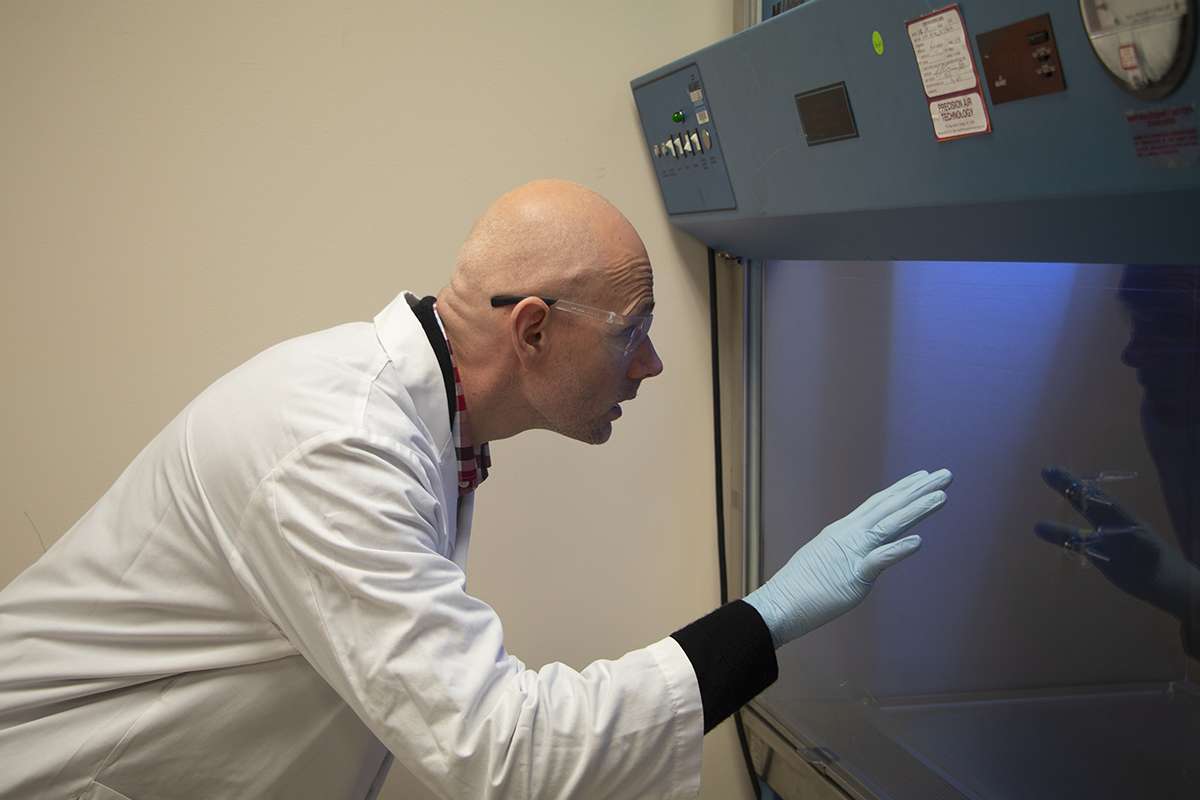How do you run a world-class research operation like Carolina’s? Finance and Operations staff understand and appreciate the science and are passionate about the researchers they support. This profile of our Environment, Health and Safety biological safety team is part of a fuller story from F&O’s “On the Go” newsletter, February 2019.
Biological Safety: Contributing to Scientific Advancement

Every day at Carolina, approximately 600 principle investigators and 5000 researchers work in 3500 campus laboratory spaces in 35 buildings on dozens of diseases and disorders, including human immunodeficiency virus (HIV), cancer, heart disease, autism, Alzheimer’s disease, and much more. This important work is supported by five full-time biological safety (biosafety) specialists in UNC-Chapel Hill’s Environment, Health and Safety department, who promote the safe use of biological agents in the university’s research laboratories.
The biosafety team reviews the processes for working safely with biohazardous material, supporting proper handling and disposal to reduce the potential for exposure to infectious or harmful agents. In addition, the team leads safety committees and provides education, training and laboratory inspections. This important oversight work also includes ensuring research compliance with at least six national and other state and local regulatory agencies.
“The biosafety team, like all of the Environment, Health and Safety employees, knows how critical research is to the University, the state and the world,” said University Biosafety Officer Garry Coulson, who earned his Ph.D. in infectious diseases from the University of Georgia.
Previously a research associate specializing in bacterial respiratory pathogens, Coulson brings to his work a clear understanding of the research that he is supporting in his role in EHS. “Every day we come to work knowing we are contributing to scientific advancement and a better world.”
Learn more about Environment, Health and Safety’s biological safety efforts.
